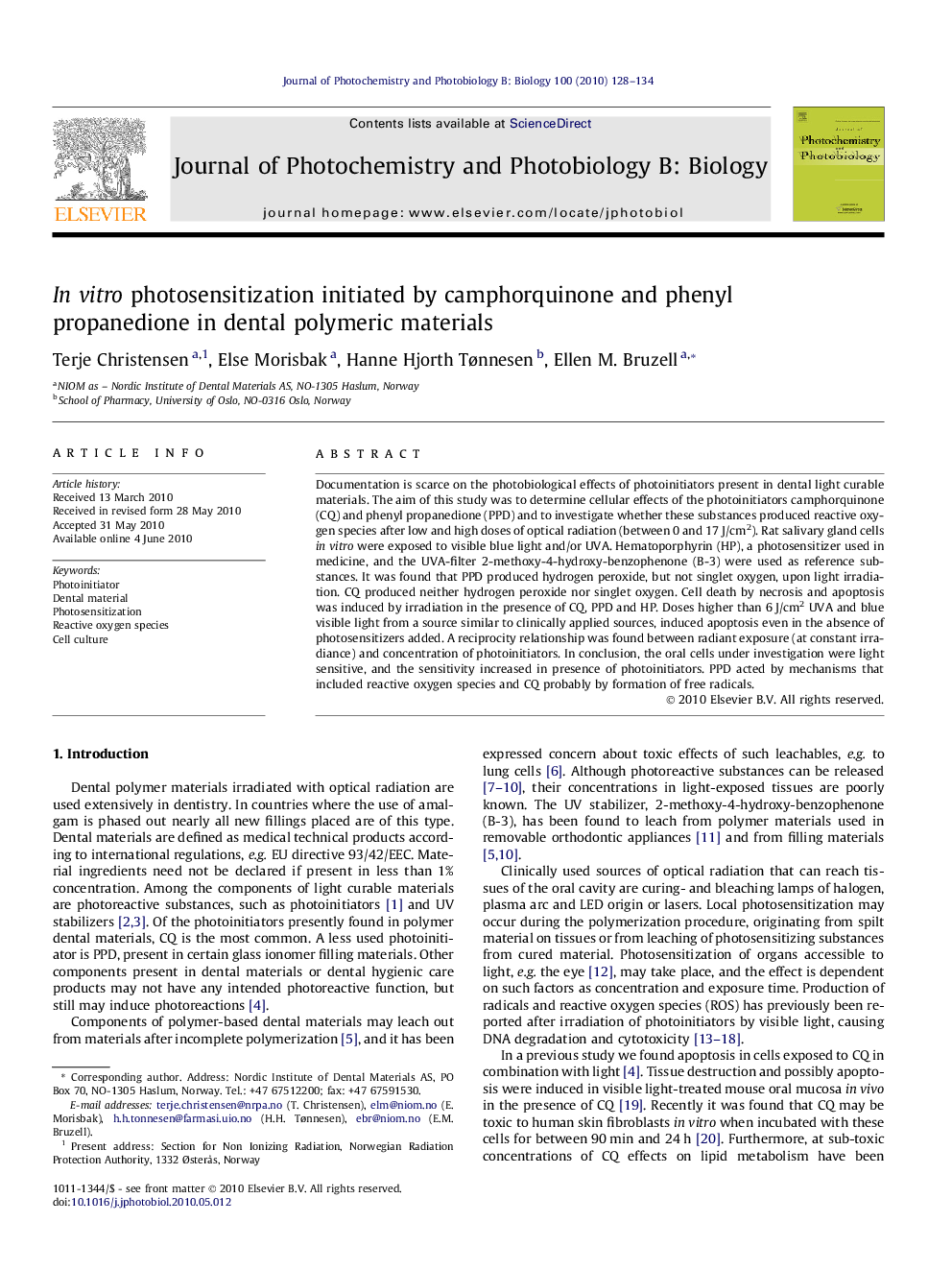| Article ID | Journal | Published Year | Pages | File Type |
|---|---|---|---|---|
| 31010 | Journal of Photochemistry and Photobiology B: Biology | 2010 | 7 Pages |
Documentation is scarce on the photobiological effects of photoinitiators present in dental light curable materials. The aim of this study was to determine cellular effects of the photoinitiators camphorquinone (CQ) and phenyl propanedione (PPD) and to investigate whether these substances produced reactive oxygen species after low and high doses of optical radiation (between 0 and 17 J/cm2). Rat salivary gland cells in vitro were exposed to visible blue light and/or UVA. Hematoporphyrin (HP), a photosensitizer used in medicine, and the UVA-filter 2-methoxy-4-hydroxy-benzophenone (B-3) were used as reference substances. It was found that PPD produced hydrogen peroxide, but not singlet oxygen, upon light irradiation. CQ produced neither hydrogen peroxide nor singlet oxygen. Cell death by necrosis and apoptosis was induced by irradiation in the presence of CQ, PPD and HP. Doses higher than 6 J/cm2 UVA and blue visible light from a source similar to clinically applied sources, induced apoptosis even in the absence of photosensitizers added. A reciprocity relationship was found between radiant exposure (at constant irradiance) and concentration of photoinitiators. In conclusion, the oral cells under investigation were light sensitive, and the sensitivity increased in presence of photoinitiators. PPD acted by mechanisms that included reactive oxygen species and CQ probably by formation of free radicals.
